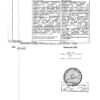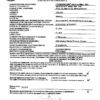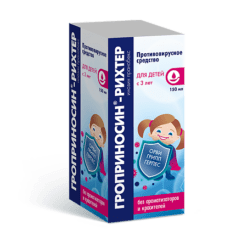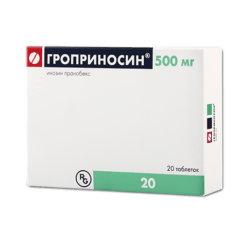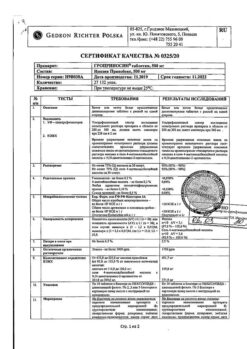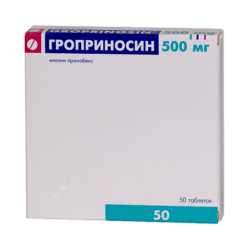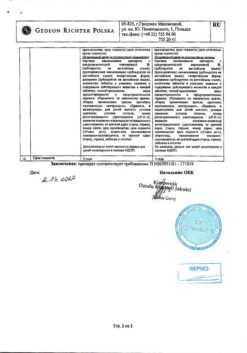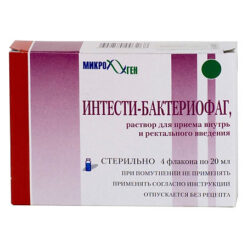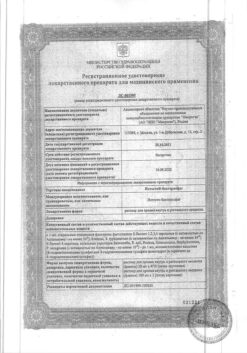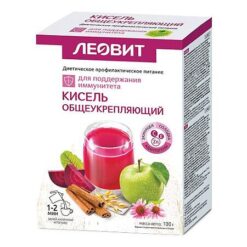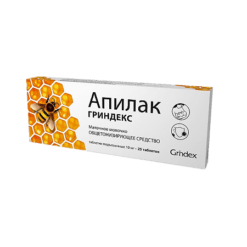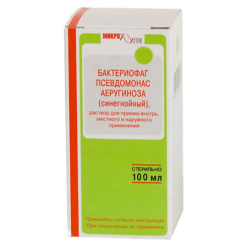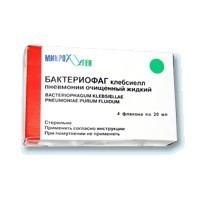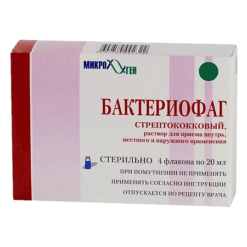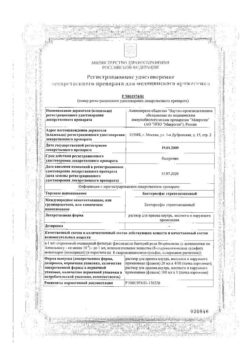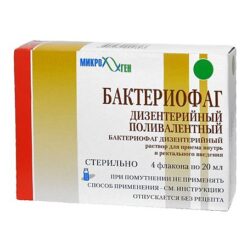No products in the cart.
Groprinosin, tablets 500 mg 30 pcs
€28.08 €23.40
Description
Pharmacotherapeutic group: Immunostimulant ATX code: J05AX05
Pharmacodynamics
Inosin pranobex is a synthetic purine derivative and is a complex containing inosin and N,N-dimethylamino-2-propanol in a molar ratio of 1:3. It has immunostimulating activity and nonspecific antiviral action. The effectiveness of the complex is determined by the presence of inosin, the second component increases its availability to lymphocytes.
It restores lymphocyte functions in immunosuppression, increases blastogenesis in monocyte population, stimulates membrane receptor expression on the surface of T-helpers, prevents decrease in lymphocyte activity under glucocorticosteroids influence, normalizes thymidine induction into lymphocytes. Inosin pranobex stimulates the activity of T-lymphocytes and natural killer cells, T-suppressor and T-helper functions, increases immunoglobulin G (Ig G), interferon-gamma, interleukins IL-1 and IL-2 production, decreases anti-inflammatory cytokines – IL-4 and IL-10, potentiates neutrophils, monocytes and macrophages chemotaxis.
The preparation shows antiviral activity in vivo against herpes simplex virus, cytomegalovirus, measles virus, human T-cell lymphoma virus (type III), polioviruses, influenza A and B viruses, human enterocytopathogenic virus (HEV), encephalomyocarditis and horse encephalitis viruses. The mechanism of antiviral action of Pranobex inosine is associated with inhibition of viral RNA and dihydropteroat synthetase involved in replication of some viruses, it enhances the suppressed viral mRNA synthesis of lymphocytes, which is accompanied by reduction of viral RNA synthesis and translation of viral proteins, increases production of alpha and gamma interferons by lymphocytes having antiviral properties. In combination treatment it increases the effect of interferon-alpha, acyclovir and zidovudine.
Pharmacokinetics
After oral administration the drug is well absorbed from the gastrointestinal tract (GIT). Maximum concentration of ingredients in blood plasma is determined after 1-2 hours. It is rapidly metabolized and excreted through the kidneys. It is metabolized similarly to endogenous purine nucleotides with formation of uric acid. N,N-dimethylamino-2-propanol is metabolized to N-oxide, and 4-acetamidobenzoate to o-acylglucuronide. No cumulation of the drug in the body has been detected. The elimination half-life (T1/2) is 3.5 h for N,N-dimethylamino-2-propanol and 50 min for 4-acetamidobenzoate. The drug and its metabolites are eliminated from the body by the kidneys within 24-48 hours.
Indications
Indications
– Influenza and acute respiratory viral infections.
– Infections caused by herpes simplex virus types 1, 2, 3 and 4: genital and labial herpes, herpetic keratitis, herpes zoster, chicken pox, infectious mononucleosis caused by the Epstein-Barr virus.
– Cytomegalovirus infection.
– Severe measles.
– Human papillomavirus infection: papillomas of the larynx and vocal cords (fibrous type), genital papillomavirus infections in men and women, warts.
– Subacute sclerosing panencephalitis.
– Molluscum contagiosum.
Pharmacological effect
Pharmacological effect
Pharmacotherapeutic group: Immunostimulating agent
ATX code: J05AX05
Pharmacodynamics
Inosine pranobex – a synthetic derivative of purine, is a complex containing inosine and N,N-dimethylamino-2-propanol in a molar ratio of 1:3. It has immunostimulating activity and nonspecific antiviral effect. The effectiveness of the complex is determined by the presence of inosine, the second component increases its availability for lymphocytes.
Restores the functions of lymphocytes in conditions of immunosuppression, increases blastogenesis in the monocyte population, stimulates the expression of membrane receptors on the surface of T-helper cells, prevents a decrease in the activity of lymphocytes under the influence of glucocorticosteroids, and normalizes the inclusion of thymidine in them. Inosine pranobex stimulates the activity of T-lymphocytes and natural killer cells, the functions of T-suppressors and T-helpers, increases the production of immunoglobulin G (Ig G), interferon-gamma, interleukins IL-1 and IL-2, reduces the formation of anti-inflammatory cytokines – IL-4 and IL-10, potentiates the chemotaxis of neutrophils, monocytes and macrophages.
The drug exhibits antiviral activity in vivo against herpes simplex virus, cytomegalovirus, measles virus, human T-cell lymphoma virus (type III), polioviruses, influenza A and B viruses, ECHO virus (human enterocytopathogenic virus), encephalomyocarditis and equine encephalitis viruses. The mechanism of the antiviral action of inosine pranobex is associated with inhibition of viral RNA and dihydropteroate synthetase, which is involved in the replication of some viruses, enhances the synthesis of lymphocyte mRNA suppressed by viruses, which is accompanied by a decrease in the synthesis of viral RNA and translation of viral proteins, increases the production of alpha and gamma interferons by lymphocytes with antiviral properties. When administered in combination, it enhances the effect of interferon-alpha, acyclovir and zidovudine.
Pharmacokinetics
After oral administration, the drug is well absorbed from the gastrointestinal tract (GIT). The maximum concentration of ingredients in the blood plasma is determined after 1-2 hours. It is quickly metabolized and excreted through the kidneys. Metabolized similarly to endogenous purine nucleotides with the formation of uric acid. N,N-dimethylamino-2-propanol is metabolized to N-oxide, and 4-acetamidobenzoate to o-acyl glucuronide. No accumulation of the drug in the body was detected. The half-life (T1/2) is 3.5 hours for N,N-dimethylamino-2-propanol and 50 minutes for 4-acetamidobenzoate. The drug and its metabolites are excreted from the body by the kidneys within 24-48 hours.
Special instructions
Special instructions
Inosine pranobex, like other antiviral drugs, is most effective for acute viral infections if treatment is started at an early stage of the disease (preferably from the first day).
After two weeks of using the drug, the concentration of uric acid in the blood serum and urine should be monitored.
With long-term use (after four weeks of use), it is advisable to monitor liver and kidney function every month (transaminase activity, creatinine, uric acid levels in the blood serum).
Patients with significantly increased concentrations of uric acid in the body can simultaneously take medications that lower their concentrations. During treatment, it is necessary to monitor the concentration of uric acid in the blood serum when prescribing the drug simultaneously with drugs that increase the concentration of uric acid or drugs that impair renal function.
Inosine pranobex should be used with caution in patients with acute liver failure, since the drug is metabolized in the liver.
Impact on the ability to drive vehicles and machinery
The effect of inosine pranobex on psychomotor functions of the body and the ability to drive vehicles and moving mechanisms has not been studied. When using the drug, the possibility of dizziness and drowsiness should be taken into account.
Active ingredient
Active ingredient
Inosine Pranobex
Composition
Composition
1 tablet contains:
Active ingredient: inosine pranobex 500 mg.
Excipients: potato starch, povidone K 25, magnesium stearate.
Pregnancy
Pregnancy
The use of Groprinosin® during pregnancy and breastfeeding is contraindicated, since the safety of use has not been established.
Contraindications
Contraindications
– Hypersensitivity to inosine pranobex and other components of the drug. Gout.
– Urolithiasis.
– Chronic renal failure.
– Children under 3 years of age (body weight up to 15-20 kg).
– Arrhythmias.
– Pregnancy and breastfeeding period.
With caution
Caution should be exercised when administered concomitantly with xanthine oxidase inhibitors, diuretics, zidovudine, in acute liver failure.
Side Effects
Side Effects
The incidence of adverse reactions after using the drug is classified according to WHO recommendations: very common – >10%; common – >1% and 0.1% and <1% and frequency unknown (cannot be determined based on available data).Immune system disorders
Uncommon: angioedema, urticaria;
Frequency unknown: hypersensitivity reactions, anaphylactic reactions, anaphylactic shock.
Nervous system disorders
Common: headache, dizziness, fatigue, feeling unwell, weakness;
Uncommon: nervousness, drowsiness, insomnia.
Gastrointestinal disorders
Often: loss of appetite, nausea, vomiting, epigastric pain;
Uncommon: diarrhea, constipation.
Disorders of the liver and biliary tract
Often: temporary increase in the activity of transaminases and alkaline phosphatase in the blood plasma.
Disorders of the skin and subcutaneous tissues
Often: itching, rash;
Uncommon: maculopapular rash;
Frequency unknown: erythema.
Renal and urinary tract disorders
Uncommon: polyuria.
General disorders and disorders at the injection site
Common: joint pain, exacerbation of gout.
Laboratory and instrumental data
Very often: increased urea concentration in blood plasma, increased urea concentration in urine;
Common: increased blood urea nitrogen concentration.
If any of the adverse reactions indicated in the instructions worsen, or you notice any other adverse reactions not listed in the instructions, notify your doctor.
Interaction
Interaction
Immunosuppressants weaken the immunostimulating effect of inosine pranobex.
Inosine pranobex should be used with caution in patients taking concomitant xanthine oxidase inhibitors (allopurinol) or drugs that can block tubular secretion of uric acid, for example, loop diuretics (furosemide, torasemide, ethacrynic acid), as this may lead to an increase in the concentration of uric acid in the blood serum.
The combined use of inosine pranobex with zidovudine leads to an increase in the concentration of zidovudine in the blood plasma and lengthens its half-life. Therefore, when inosine pranobex is co-administered with zidovudine, a dose adjustment of zidovudine may be required.
Overdose
Overdose
In case of overdose, gastric lavage and symptomatic therapy are indicated.
Storage conditions
Storage conditions
At a temperature not exceeding 25 °C.
Keep out of the reach of children.
Shelf life
Shelf life
3 years.
Do not use after the expiration date indicated on the package.
Manufacturer
Manufacturer
Gedeon Richter Poland, Poland
Additional information
| Shelf life | 3 years. Do not use after the expiration date stated on the package. |
|---|---|
| Conditions of storage | At a temperature not exceeding 25 °C. Keep out of reach of children. |
| Manufacturer | Gedeon Richter Poland, Poland |
| Medication form | pills |
| Brand | Gedeon Richter Poland |
Other forms…
Related products
Buy Groprinosin, tablets 500 mg 30 pcs with delivery to USA, UK, Europe and over 120 other countries.






